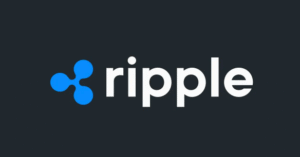$HYG $JNK $BND
#HighYieldBonds #Investing #FixedIncome #USMarkets #BondMarket #InvestorSentiment #FinancialNews #CreditMarkets #HighYieldDebt #Inflation #MarketOutlook #GlobalEconomy
Fund managers are maintaining an optimistic outlook for U.S. high-yield bonds, encouraged by strong corporate fundamentals, easing inflationary signals, and prevailing demand for income-generating assets. As the Federal Reserve approaches what many believe could be the peak of its rate-hiking cycle, the appeal of high-yield bonds is growing. Investors are attracted by their favorable risk-adjusted returns compared to other fixed-income instruments, especially in an environment where yields on risk-free assets begin to stabilize. Analysts note that the confidence stems partly from robust earnings among companies issuing these bonds, which underscores their ability to service debt even in a macroeconomic environment still characterized by uncertainties.
High-yield bonds—often referred to as “junk bonds” due to their lower credit ratings—are seen as a higher-risk, higher-reward component of the fixed-income market. For income-focused portfolios, they have served as an effective means of maintaining cash flows, particularly as equity volatility remains elevated. Exchange-traded funds (ETFs) such as $HYG and $JNK—a benchmark for high-yield bond performance—have seen notable inflows in recent months, as institutional and retail investors alike chase opportunities to lock in attractive yields. With yields on these instruments currently hovering between 8-9%, the willingness to embrace slightly more credit risk seems justified, particularly when compared to investment-grade yields.
However, skepticism is beginning to brew among some market participants who argue that specific pockets of the high-yield market may be approaching overheated levels. Certain sectors, such as high-yield issuers in technology and consumer discretionary markets, are seeing spreads compress to valuation levels that some consider unsustainable. This rally in high-yield debt is raising questions about whether investors are becoming overly complacent about downside risks, particularly in the face of an economic slowdown or potential recessions. Analysts caution that as rate cuts from the Federal Reserve remain speculative into late 2024, any pivot in market sentiment could prompt sharp price corrections in these riskier debt instruments.
The broader implications for the global economy are also worth considering. If high-yield bond markets begin to show cracks, it could serve as a signal that risk-taking behaviors among investors have reached excessive levels. This would leave portfolios vulnerable to sharp corrections should the macroeconomic backdrop deteriorate. At the same time, policymakers watching these trends will weigh the balance between promoting credit market health and avoiding asset bubbles. While the bullish sentiment among fund managers is likely to persist for the medium term, the conflicting narratives of optimism and caution point to a pivotal moment for U.S. fixed-income markets. Investors would be wise to monitor economic indicators and remain selective in asset allocation strategies.











Comments are closed.